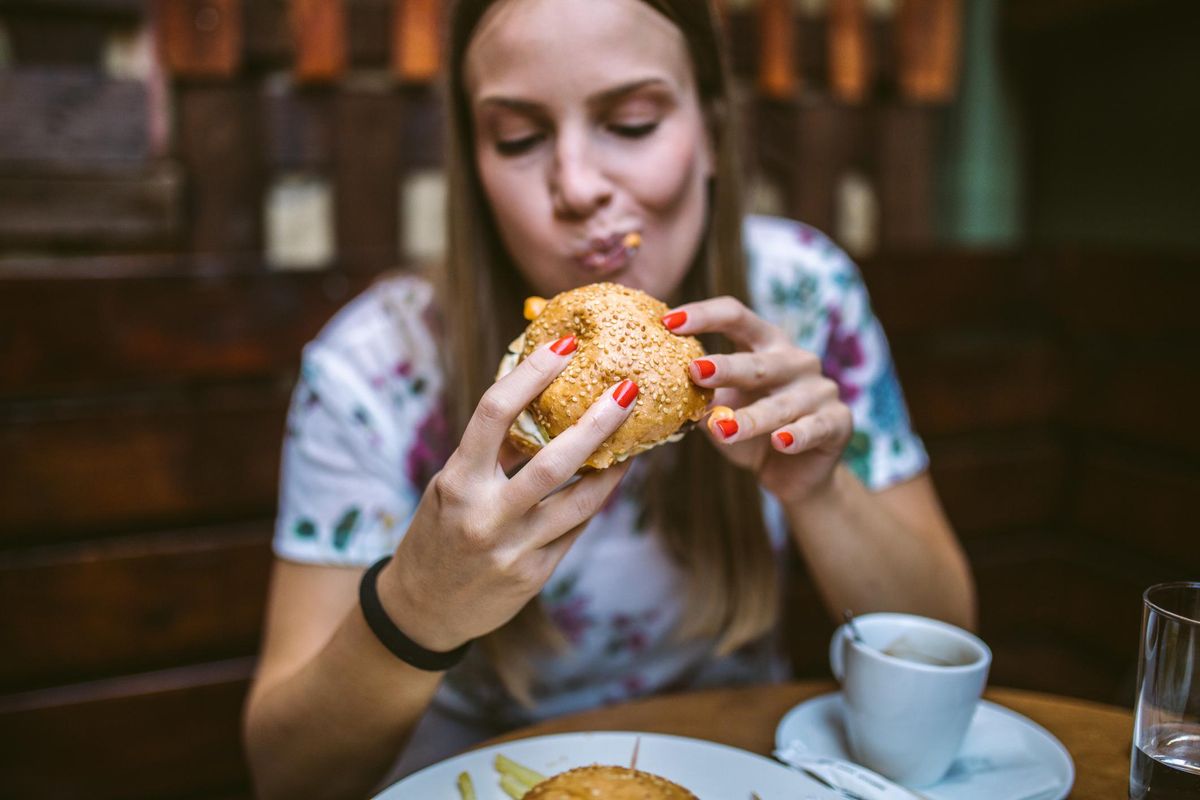

Sheryl Kraft
Sheryl Kraft, a freelance writer and breast cancer survivor, was born in Long Beach, New York. She currently lives in Connecticut with her husband Alan and dog Chloe, where her nest is empty of her two sons Jonathan. Sheryl writes articles and essays on breast cancer and contributes to a variety of publications and websites where she writes on general health and wellness issues. She earned her MFA in writing from Sarah Lawrence College in 2005.
Full BioLearn about our editorial policies
Medically Reviewed
1. We're eating out a lot. A 2006 report from the U.S. Department of Agriculture finds that Americans get 32 percent of their daily calories from restaurant food—up from just 18 percent in the 1970s.
READ: 9 Strategies for Weight-Loss Success
2. Our portion perception gets skewed. It's known as "portion distortion." The next time you order a portion of pasta at a restaurant, stop and notice how big it is. Many pasta portions can be anywhere between two and four times larger than the recommended serving size (which is 1/2 cup, or the size of half a baseball).
Another popular portion-offender is the adored bagel. Most bagels have grown so big that the average bagel can be equivalent to up to five servings of bread, when in actuality the "proper" size should be about the diameter of a can of tuna (3-4 inches). That size, to many of us, is a "mini bagel."
Simply put, we, as consumers, get accustomed to larger sizes and, soon enough, lose perspective when it comes to how much we actually need (vs. want) to eat.
3. We're eating mindlessly or while on the run. This is a recipe for disaster. Eating while doing another task, like watching TV, reading, driving or working at your desk is like putting your appetite on autopilot. Multitask while you eat and you'll not only eat way more than you need, but it's likely you'll also eat way faster than you should—and possibly even forget what you ate or that you even ate at all. It's like driving the same familiar route over and over—often you reach your destination and realize you don't even remember driving there.
When you focus in on your dining experience—give yourself an opportunity to see, chew, taste and smell—you're more likely to home in on your body's cues for fullness and satiety.
READ: Eating to Beat Stress and Depression
4. It tastes so good. Many foods—especially processed foods—are engineered to burst with sensation and provide just the right color, texture, crunch, etc. Dr. David Kessler, the former commissioner of the U.S. Food and Drug Administration, blames food manufacturers for "hijacking the brains" of millions of Americans by creating products that cause us to crave them and overeat them. Food manufacturers, he says, know that sugar, fat and salt all sell.
Registered dietitian Rachel Begun offers this strategy for a special food (for me, that's Italian-style cheesecake!) that's tough to resist: "Enjoy the first bite, savor the second bite and make the third bite your last."
5. Social occasions revolve around food. Birthdays, anniversaries, graduations, work events, going to the movies, seeing old friends. What do they all have in common? Food is an integral part of the occasion. People celebrate over food. They love to share it, talk about it, toast to it, unwind with it, indulge in it. Food becomes comforting and nurturing—the main celebration and entertainment.
More for your reading pleasure: Nutrition Guide
You might be interested in





